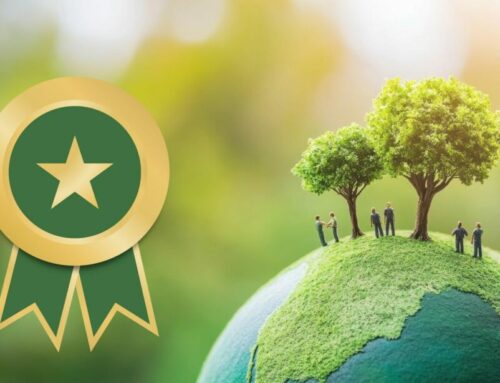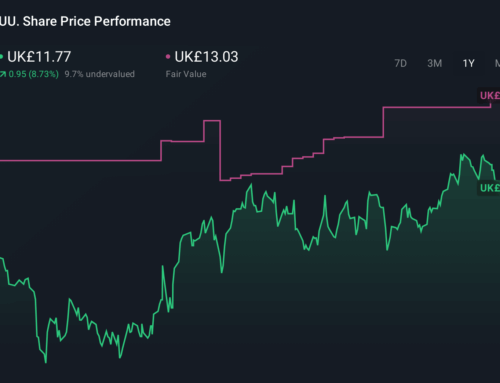The photographer who captured the Amazon as a desert: ‘It was dystopian, a moment of radic
April 8, 2025
Three fishermen walk back to their homes in the Vila de Pesqueiro area from Manacapuru, 100 kilometers upriver from Manaus, the capital of the state of Amazonas, Brazil. They tread on sandbanks for two kilometers. The temperature is 40 degrees Celsius. The path they travel resembles a desert, although it should be anything but. They walk along the Solimões River, but not along its banks. They walk along the bed of a river that, in October 2024, when Peruvian-Mexican photographer Musuk Nolte took the photo that depicts the scene, was completely dry.
Nolte, 37, has just won a World Press Photo award in the South America stories category for his project Drought in the Amazon. “That image shows them walking on the bed of a river they usually navigate,” says Nolte. Before the drought, the Solimões — which corresponds to the stretch of the Amazon River in Brazil, Colombia, Peru, and the city of Manaus — reached the fishermen’s homes, but due to the lack of rain, it had shrunk and retreated two kilometers. The water level was progressively decreasing. “So they were getting farther and farther away,” says Nolte in a telephone interview with EL PAÍS. “They had to walk 45 minutes to get home, under difficult circumstances.” The Brazilian Geological Survey indicated at the time that the river was experiencing daily drops of 19 centimeters on average.

The aerial photo of those three fishermen is his favorite from the award-winning series. “For me, it’s significant because it shows the dimensions of the human scale, what human beings represent in such a vast territory,” he says. Nolte, who has been working in documentary photography for 18 years on themes of historical memory, climate change, and Indigenous communities, mostly in Peru, didn’t come to the Brazilian Amazon by chance. For the past five years, he’s been working on a project about issues surrounding water. It’s called Geography of Water and seeks to portray the territory from different altitudinal levels to understand it more broadly, he explains.
First, he went to Iquitos, Peru, to document the drought. But, “when talking about the Amazon, geographical boundaries are absurd in a more complex context,” he maintains. Accompanied by a photographer friend, he landed in Manaus, Brazil. “The most visibly dramatic place was the most appropriate for describing the dimensions of the rivers’ decline,” he says. The Amazon River is 6,400 kilometers (3,977 miles) long, originates in the Peruvian Andes, flows mostly through Brazil, and partly through Colombia.
Before arriving, he had seen images and monitored the river’s decline. However, once in Manaus, he felt very confused. “It looks like a desert, but when you put it into context, it’s the Amazon, something doesn’t add up and it doesn’t fit with our imagination,” he explains. “It was dystopian. It seemed like I was living through a moment of radical transformation for the planet.”
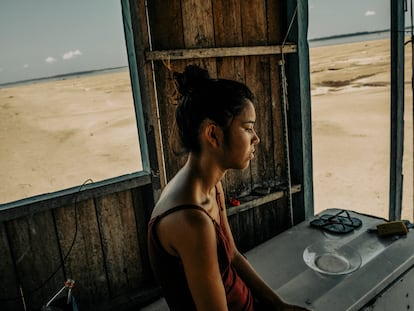
Nolte spent nearly a month photographing the area, thanks to a Bertha Foundation grant. At the time, Manaus was experiencing its lowest water levels since records began in 1902. More than 480,000 people were affected by the drought, according to the Amazonas state civil defense agency. The Solimões River, specifically, was experiencing its worst drought, leaving nearby villages without food, water, or transportation. According to civil defense, the river was only three meters deep.
Those who live in the area understand that the region is dynamic, that rivers shift and change, but the crisis affected that “predictability,” Nolte explains. Here, the river functions as a giant highway where people shop, travel to work, the hospital, or school. Without water, residents began to wonder if they would have to leave their homes. “The smaller tributaries were impassable, and people who provided transportation services no longer wanted to try. If someone got sick, they couldn’t get to a hospital,” he says.
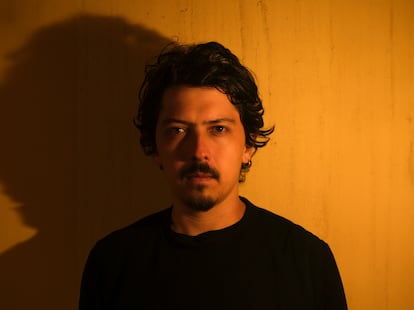
According to a UNICEF report published in November 2024, the drought in the Amazon left 420,000 children in Peru, Brazil, and Colombia without food, water, and education. Furthermore, the Amazon River basin — the territory drained by the river and its tributaries and distributed across Bolivia, Brazil, Colombia, Ecuador, Peru, and Venezuela — experienced historically low water levels, affecting river transport, access to food, services, and medicine for more than 47 million people, according to data from the Western South American Drought Bulletin of the International Center for Research on the El Niño Phenomenon (CIIFEN).
This is reflected in the first photo in Nolte’s World Press Photo-winning series. It shows a young man carrying food to his mother, who is waiting for him in Manacapuru. To do so, he had to walk two kilometers along the same path he used to sail. Using another aerial image that shows the marks left by boats attempting to advance, the photographer describes the scene as “a territory that seems to have scars.” Also visible are homes that were once houseboats and had run aground. After Nolte took his photographs, the rains returned the river to its former levels. “Now, in fact, it’s in flood stage,” he says.
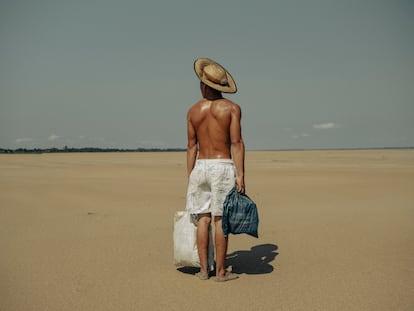
But for him, the interesting thing about the award is the impact it gives his stories, in this case, the effects of climate change. “I’ve been interested in looking for extreme points where one can point out or demonstrate what will happen soon. Something that is already happening, but that will happen more and more,” he says.
As part of the Geography of Water project, Nolte has also portrayed the water access crisis in Lima, a coastal city, during the pandemic; the drought on Lake Titicaca in the southern region of Puno (3,812 meters above sea level); flooding in the Amazon region of Ucayali; and an oil spill in the Peruvian sea, a project for which he also won a World Press Photo award in 2023. “Water is what connects territories,” he explains. “In school, we learn about the water cycle: that it evaporates in the sea, turns into ice on the snowy mountains, the sun melts it, and it flows down the valleys and returns to the sea. That idea is not something we fully understand in practice, when we turn on the tap and there is water there.”
Sign up for our weekly newsletter to get more English-language news coverage from EL PAÍS USA Edition
Search
RECENT PRESS RELEASES
Related Post
